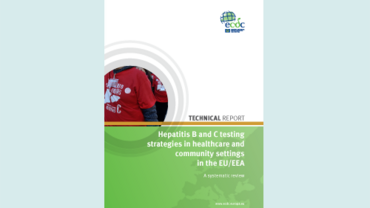European Network for Hepatitis B and C Surveillance
The European Network for Hepatitis B and C Surveillance comprises the contact points for Hepatitis B and C surveillance that are nominated by the competent bodies for surveillance in EU/EFTA, and includes both epidemiology and virology experts. It aims to improve collaboration, build capacity and facilitate dissemination of information on hepatitis B and C to inform public health policy and planning across Europe.
From 2011 onwards the enhanced surveillance data on hepatitis B and C has been collected annually and is submitted to the European Surveillance System (TESSy) by the national surveillance contact points in the Member States.
Main activities
• Improve epidemiological data around hepatitis B and C across Europe
• Collection of annual enhanced surveillance data from European countries
• Production of routine surveillance reports
• Publications based around relevant themes
• Development of alternative sources of epidemiological data for hepatitis B and C
Epidemiological objectives
To monitor:
- The incidence and routes of transmission of newly diagnosed cases of hepatitis B and C in the general and vulnerable populations;
- the prevalence of chronic hepatitis B and C virus infection to determine burden of infection (and estimate the proportion undiagnosed) in the general and vulnerable populations;
- the proportion of chronic hepatitis B and C cases that are engaged in care (continuum of care);
- the proportion of newly diagnosed chronic hepatitis B and C presenting late.
To determine:
- The genotype and sequence distributions of newly acquired hepatitis B and hepatitis C viruses to better follow transmission patterns, the emergence of resistance and vaccine escape mutants and potentially more virulent virus strains (priority on hepatitis C infections);
- and describe the proportion of co-infections (HIV/HBV/HCV/HDV)nd describe the proportion of co-infections (HIV/HBV/HCV/HDV);
- the proportion of HCV re-infections (especially among key risk groups with high incidence e.g. PWIDs)
Programme objectives
- To provide data to inform, strengthen and improve the development, evaluation and monitoring of national and EU level hepatitis B and C primary prevention and control programmes (e.g. vaccination, harm reduction);
- To monitor the burden of chronic hepatitis B and C infection and their continuum of care to inform, strengthen and improve the development, evaluation and monitoring of secondary prevention programmes (e.g. screening and high quality care pathways);
- To identify emerging population groups at risk (and changes over time) and in need for targeted prevention measures;
- To report on patient safety from healthcare associated infection and healthcare worker safety from occupational transmission;
- To better describe the prevalence of hepatitis in vulnerable populations – for Hepatitis B: especially MSM, IDU, CSW, migrants and for Hepatitis C: especially IDU, prisoners, blood and blood product recipients, migrants;
- To detect and monitor any multi-state outbreaks of viral hepatitis with respect to source, time, person, population and place in order to provide a rationale for public health action.








